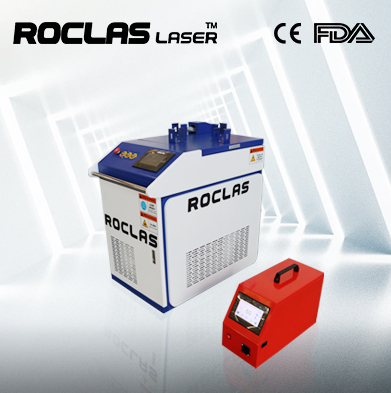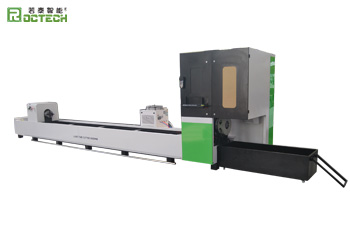Bevezetés
A barkácsolás és a hobbista fémmegmunkálás világában a CNC plazmavágó asztal felbecsülhetetlen értékű eszköz. Lehetővé teszi a fémlemezek precíz, automatizált vágását, lehetővé téve a hobbisok számára, hogy bonyolult terveket és prototípusokat készítsenek. Saját hobbi CNC plazmavágó asztal megépítése jutalmazó projekt lehet, amely nemcsak pénzt takarít meg, hanem mélyebb megértést is nyújt az érintett technológiáról. Ez az útmutató bemutatja Önnek a saját CNC plazmavágóasztal megépítésének folyamatát, a megfelelő alkatrészek kiválasztásától a gép összeszereléséig és kalibrálásáig.
A CNC plazmavágás megértése

Mielőtt belemerülne az építési folyamatba, elengedhetetlen megérteni, hogy mi a CNC plazmavágás és hogyan működik. A plazmavágás olyan folyamat, amely nagy sebességű ionizált gáz (plazma) sugárral vágja át elektromosan vezető anyagokat, elsősorban fémeket. A CNC (Computer Numerical Control) szempont a plazmavágó mozgásának szabályozására számítógép segítségével történik, lehetővé téve a precíz és ismételhető vágásokat.
CNC plazmavágó asztal alkatrészei

A typical CNC plasma cutter table consists of several key components
1. Frame and Gantry The frame provides the structural support for the entire machine, while the gantry holds the plasma torch and moves it along the X and Y axes. The frame and gantry must be sturdy and rigid to ensure accurate cuts.
2. Plasma Cutter The plasma cutter is the heart of the machine. It generates the plasma arc that cuts through the metal. When selecting a plasma cutter, consider factors such as cutting capacity, power requirements, and compatibility with CNC controls.
3. CNC Controller The CNC controller is the brain of the machine. It interprets the G-code (a programming language used to control CNC machines) and sends commands to the motors that move the gantry and plasma torch. Popular CNC controllers for hobbyists include Mach3, LinuxCNC, and GRBL.
4. Stepper Motors and Drivers Stepper motors are used to move the gantry and plasma torch along the X, Y, and Z axes. The drivers control the stepper motors, ensuring precise movement. When selecting stepper motors and drivers, consider the torque, speed, and compatibility with your CNC controller.
5. Linear Motion Components Linear motion components, such as rails, bearings, and lead screws, guide the movement of the gantry and plasma torch. These components must be smooth and precise to ensure accurate cuts.
6. Power Supply The power supply provides the necessary power to the CNC controller, stepper motors, and plasma cutter. Ensure that the power supply is compatible with the voltage and current requirements of your components.
7. Software CNC software is used to create and edit G-code files, which control the movement of the plasma cutter. Popular CNC software for hobbyists includes Fusion 360, Inkscape, and SheetCam.
Step-by-Step Guide to Building Your CNC Plasma Cutter Table
Step 1 Design and Planning
Before starting the build, it's crucial to have a detailed plan. Consider the size of the table, the materials you'll be cutting, and the level of precision required. Create a CAD (Computer-Aided Design) model of your CNC plasma cutter table to visualize the final product and identify any potential issues.
Step 2 Building the Frame and Gantry
The frame and gantry are the foundation of your CNC plasma cutter table. Use sturdy materials such as steel or aluminum to construct the frame. Ensure that the frame is level and square to prevent any misalignment during operation. The gantry should be designed to move smoothly along the X and Y axes, with minimal play or flex.
Step 3 Installing Linear Motion Components
Install the linear motion components, such as rails, bearings, and lead screws, onto the frame and gantry. Ensure that the rails are straight and parallel, and that the bearings move smoothly along the rails. The lead screws should be properly aligned and securely fastened to prevent any backlash.
Step 4 Mounting the Stepper Motors and Drivers
Mount the stepper motors onto the frame and gantry, ensuring that they are securely fastened and properly aligned with the lead screws. Connect the stepper motors to the drivers, and then connect the drivers to the CNC controller. Follow the manufacturer's instructions for wiring and configuring the stepper motors and drivers.
Step 5 Installing the Plasma Cutter
Mount the plasma cutter onto the gantry, ensuring that it is securely fastened and properly aligned with the cutting surface. Connect the plasma cutter to the CNC controller and power supply, following the manufacturer's instructions. Ensure that the plasma cutter is properly grounded to prevent electrical hazards.
Step 6 Wiring and Power Supply
Connect all the electrical components, including the CNC controller, stepper motors, drivers, and plasma cutter, to the power supply. Ensure that all connections are secure and that the power supply is compatible with the voltage and current requirements of your components. Use appropriate wiring and connectors to prevent any electrical issues.
Step 7 Installing and Configuring the Software
Install the CNC software on your computer and configure it to work with your CNC controller. Create or import a G-code file into the software, and test the movement of the gantry and plasma cutter. Ensure that the software is properly configured to control the stepper motors and plasma cutter.
Step 8 Calibration and Testing
Calibrate the CNC plasma cutter table by adjusting the stepper motor steps per unit, ensuring that the gantry moves the correct distance for each step. Test the machine by cutting a simple design on a piece of scrap metal. Make any necessary adjustments to the software, stepper motors, or plasma cutter to ensure accurate and precise cuts.
Step 9 Safety Considerations
Safety is paramount when operating a CNC plasma cutter table. Ensure that the machine is properly grounded and that all electrical connections are secure. Wear appropriate personal protective equipment (PPE), such as safety glasses, gloves, and a welding helmet. Keep a fire extinguisher nearby in case of any accidents. Always follow the manufacturer's safety guidelines for the plasma cutter and CNC controller.
Step 10 Maintenance and Upgrades
Regular maintenance is essential to keep your CNC plasma cutter table in optimal condition. Clean the linear motion components, check for any loose connections, and replace any worn-out parts. Consider upgrading components such as the plasma cutter, stepper motors, or CNC controller to improve the performance and capabilities of your machine.
Conclusion
Building your own hobby CNC plasma cutter table is a challenging but rewarding project that can greatly enhance your metalworking capabilities. By carefully selecting the right components, following a detailed plan, and paying attention to safety and maintenance, you can create a powerful and precise tool that will serve you well for years to come. Whether you're a seasoned hobbyist or a beginner, this guide provides the knowledge and steps needed to successfully build your own CNC plasma cutter table. Happy building!
Függetlenül attól, hogy általános tanácsra vagy konkrét támogatásra van szüksége, örömmel segítünk Önnek.